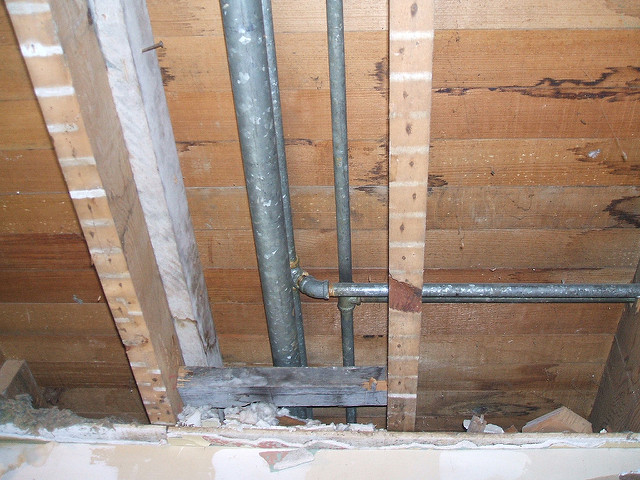Uncovering Hidden Water Line Leaks: 6 Clever Detection Hacks
Uncovering Hidden Water Line Leaks: 6 Clever Detection Hacks
Blog Article
Here below you can locate a bunch of decent information in relation to Detecting hidden plumbing leaks.

Early discovery of leaking water lines can mitigate a potential calamity. Some tiny water leaks may not be visible.
1. Analyze the Water Meter
Examining it is a proven method that assists you discover leaks. If it relocates, that shows a fast-moving leak. This means you might have a sluggish leak that could even be below ground.
2. Inspect Water Usage
Analyze your water costs as well as track your water consumption. As the one paying it, you should see if there are any kind of inconsistencies. If you find sudden changes, despite your intake being the same, it means that you have leakages in your plumbing system. Keep in mind, your water bill should drop under the exact same range on a monthly basis. An abrupt spike in your costs suggests a fast-moving leakage.
Meanwhile, a constant boost every month, despite having the very same routines, shows you have a slow leakage that's likewise gradually rising. Call a plumber to completely check your residential or commercial property, specifically if you really feel a warm location on your floor with piping underneath.
3. Do a Food Coloring Examination
When it concerns water usage, 30% comes from bathrooms. Test to see if they are running properly. Decrease specks of food color in the container and wait 10 mins. If the color in some way infiltrates your bowl during that time without flushing, there's a leakage between the container as well as dish.
4. Asses Outside Lines
Don't fail to remember to examine your outdoor water lines also. Ought to water permeate out of the connection, you have a loose rubber gasket. One little leak can waste bunches of water as well as spike your water bill.
5. Inspect and Analyze the Scenario
House owners must make it a routine to inspect under the sink counters as well as even inside cabinets for any type of bad odor or mold growth. These two warnings suggest a leak so prompt attention is called for. Doing regular evaluations, even bi-annually, can conserve you from a significant issue.
If you understand your home is already old, keep a watchful eye on your heating units, hoses, pipelines and so on. Check for discolorations and damaging as a lot of appliances and pipelines have a life span. They will also naturally wear away as a result of tear and use. If you think dripping water lines in your plumbing system, don't wait on it to rise. Call an expert plumber right now so you do not end up with a dreadful mess in your home.
Early detection of dripping water lines can reduce a possible calamity. Some small water leakages may not be noticeable. Checking it is a guaranteed way that assists you discover leaks. One little leak can squander tons of water as well as spike your water expense.
If you think dripping water lines in your plumbing system, don't wait for it to intensify.
WARNING SIGNS OF WATER LEAKAGE BEHIND THE WALL
PERSISTENT MUSTY ODORS
As water slowly drips from a leaky pipe inside the wall, flooring and sheetrock stay damp and develop an odor similar to wet cardboard. It generates a musty smell that can help you find hidden leaks.
MOLD IN UNUSUAL AREAS
Mold usually grows in wet areas like kitchens, baths and laundry rooms. If you spot the stuff on walls or baseboards in other rooms of the house, it’s a good indicator of undetected water leaks.
STAINS THAT GROW
When mold thrives around a leaky pipe, it sometimes takes hold on the inside surface of the affected wall. A growing stain on otherwise clean sheetrock is often your sign of a hidden plumbing problem.
PEELING OR BUBBLING WALLPAPER / PAINT
This clue is easy to miss in rooms that don’t get much use. When you see wallpaper separating along seams or paint bubbling or flaking off the wall, blame sheetrock that stays wet because of an undetected leak.
BUCKLED CEILINGS AND STAINED FLOORS
If ceilings or floors in bathrooms, kitchens or laundry areas develop structural problems, don’t rule out constant damp inside the walls. Wet sheetrock can affect adjacent framing, flooring and ceilings.
https://www.servicemasterbyzaba.com/blog/how-to-detect-water-leakage-in-walls/

I recently found that piece of writing about Hacks to detect leaks when surfing around the internet. Appreciated our post? Please share it. Help others discover it. Kudos for your time. Visit again soon.
Instant help? Contact. Report this page